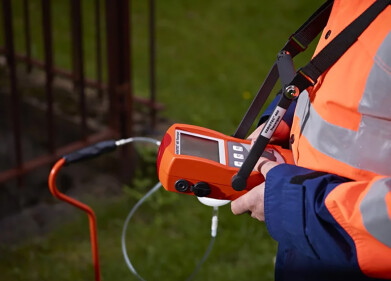Leak detection
Refrigerant Leak Detectors at SENSOR+TEST
Mar 11 2016
Refrigerant gas leak detection is becoming a high priority for many companies, especially considering the increasing price of refrigerant gas, not to mention emergency service call-out costs to find, detect and repair leaks of hydrofluorocarbons (HFC), chlorofluorocarbons (CFC), hydrochlorofluorocarbons (HCFC), Ammonia or CO2, and the potential for loss of inventory if a major leak renders a system inoperable. Installation of InfraRed Leak Detection Systems (IRLDS) is becoming increasingly important to be able to monitor for leaks in critical areas continuously. Along with the above concerns, depletion of the ozone layer is everyone's responsibility to prevent further damage to the environment.
One of the most difficult areas of sealed system servicing can be trying to find a refrigerant leak. The refrigerant leak may exist within a series of tubing that may be up to hundreds of feet long or in a component that is not readily accessible or may even be, totally concealed. It could be in an operating or safety control such as a pressure switch, an expansion valve in a display case or in the compressor room located far from normal human traffic.
Other sources of fugitive emissions of refrigerant gas are from refrigerant manufacturing plants, refrigerant storage or transfer stations. Area monitoring of these facilities can alert the proper authorities to initiate corrective action.
Typical IRLDS leak monitors either employ detectors mounted at or near expected sources of fugitive emissions wired to a central console or a central sampling station which "pulls" a sample via pneumatics circuits to periodically introduce a representative sample into an analyzer/detector.
Using refrigerant leak detectors at each point poses a maintenance problem for the system operator as the routine maintenance and calibration has to be repeated once per sampling point. Automating the calibration requires additional cost and complexity to the system.
IRLDS detection locates the sensing component at a central location, which can more easily be accessed for maintenance and calibration. Judicious use of flow or pressure sensing on each run of sample tubing can be used to detect filter or tube and filter blockage to make the well-designed sampling type of IRLDS a cost effective means to monitor for refrigeration gas leaks in refrigeration systems.
The Andros 6552, from LumaSense Technologies (Germany), can address many of the needs of the integrator with the basic NDIR bench. Up to three sample points and a dedicated zero channel can be supported directly with the on-board 12 VDC solenoid valve drivers. Additionally a 12 VDC pump can be directly operated by the 6552 or can operate a relay to operate AC pumps when higher flow rates are needed. The 6552 has a differential pressure transducer available for flow measurement as well as an absolute pressure transducer for gas channel compensation and automatic shut off of the pump in case of sample cell overpressure.
Visit LumaSense Technologies at SENSOR+TEST 2016, Hall 1, Stand 1-208.
Digital Edition
AET 28.4 Oct/Nov 2024
November 2024
Gas Detection - Go from lagging to leading: why investment in gas detection makes sense Air Monitoring - Swirl and vortex meters will aid green hydrogen production - Beyond the Stack: Emi...
View all digital editions
Events
Jan 12 2025 Abu Dhabi, UAE
Jan 14 2025 Abu Dhabi, UAE
Jan 20 2025 San Diego, CA, USA
Carrefour des Gestions Locales de L'eau
Jan 22 2025 Rennes, France
Safety, Health & Wellbeing LIVE
Jan 22 2025 Manchester, UK



















